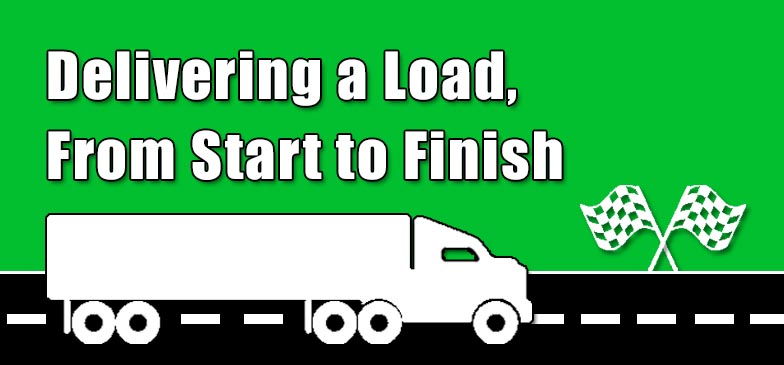Delivering a Load, Start to Finish
Have you ever thought about what exactly goes into moving a load from start to finish?
There’s a lot more to it than you’d think.
For every load hauled around the country, dozens of people and countless hours are involved in making it happen.
Most of the time, a load gets delivered without any mishaps; but, that doesn’t mean there aren’t various instances where things can go wrong. Below are some of the ways
Overage, Shortage, and Damage
OS&D is one of the ways a customer can file a freight claim against a load.
An overage means there are more items on the truck than there are listed on the Bill of Lading for either the entire load or that particular stop.
A shortage is just the opposite of that. It’s not unheard of for a trailer to get loaded out of order only to find the reported shortage at the front of a trailer, after everything has been emptied.
Damage, is self-explanatory. Freight can shift and be damaged due due to various reasons such as loading, blocking, or bracing. Road, truck, and trailer conditions, debris, and accidents can all cause damage as well.
Be sure to check your equipment every time you get ready to deliver a load. If anything happens to your freight, photos will be requested to help document any claim.
Theft
Theft is a serious issue that can not only include the cargo in the trailer, but the truck and trailer itself. Below is a checklist to follow to help you, your equipment, and your freight stay safe:
- Follow the recommended route
- Plan your breaks in advance.
- Don’t discuss your load with anybody.
- Driver Count your live loads/unloads.
Signed
Your documents need to get signed. If it doesn’t get signed, it didn’t happen. It’s that simple.
As small of a thing as a signature is, it’s extremely important to make sure everything gets signed. Otherwise, you’ll have a major headache on your hands.
Sealed
Every load you haul NEEDS to be sealed. If a shipper doesn’t provide seals, place a PAM seal on the trailer, note the number on the bill of lading, get it signed, and notify your driver manager of the seal information.
If you’re picking up a t-called load, it’s vital to verify the seal numbers for accuracy, right then and there. Do not wait to verify it.
If there’s ever a discrepancy with your load, stop! Notify the cargo claims/operations department immediately at 1-800-283-5569 or send macro 41 via Qualcom. Some destinations require a gate stamp as proof of delivery, so be sure that when you arrive that the guard shack, receiver, etc., note that you “seal intact.”
Out of seals and the shipper doesn’t provide one? Just use a padlock, right?
Wrong!
A seal assures the load hasn’t been tampered with and that no one had access to the freight. A lock doesn’t offer the same assurance, and will not prevent a cargo claim.
Delivered
The load’s been dropped, the bill of lading has been signed “seal intact”, and now, you’re done.
Wrong again.
Payroll won’t process the load on your paycheck without paperwork. All of it. Make sure your paperwork is protected from damage so as not to cause any issues when scanning them or using the TransfloMobile app. Getting these processed as soon as your load is empty will help avoid any issues with billing or payroll.
What we hope is clear after reading this article that frequent communication with your PAM Transport team will help make sure you have the tools to navigate any obstacles that come up with the job at hand.
Click here to view the entire PAM Quarterly (Vol. 1, Issue 2).
Start Your Trucking Career Now
Driver Solutions can help you get the CDL training you need to become a truck driver. Start your career now and you could be on the road making up to $50,000 in just the first year! Just take a few moments to complete our online driver application now.
